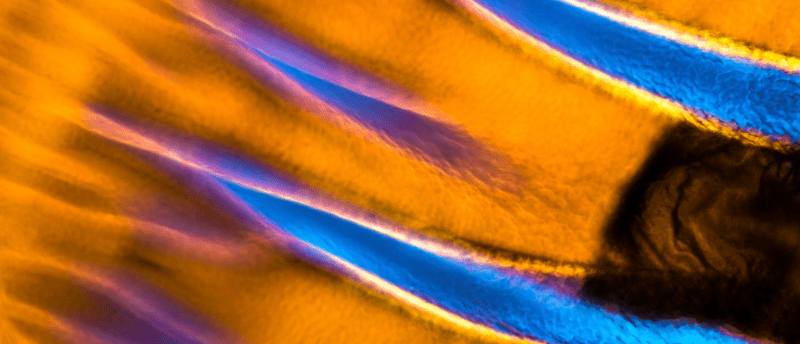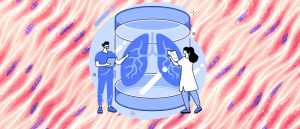Finding a promising hydrogel glue in crustacean shells?

Scientists have utilized a polymer found in crustacean shells to improve the medical potential of hydrogels.
A team of researchers from Harvard University’s (MA, USA) Wyss Institute and Harvard John A. Paulson School of Engineering and Applied Sciences, led by Dave Mooney, has found that a shellfish-derived polymer called chitosan, used as a glue between hydrogel layers, can improve the strength of complex, combined hydrogels.
Hydrogels are water-swollen cross-linked polymeric networks. They have considerable medical potential, as they can interface with the tissues of the body without causing damage and may be tweaked to complement the properties of specific organs and tissue types. Consequently, they are used in a range of medical applications – including drug delivery to specific tissues, wound dressings and as tissue-engineering scaffolds.
A major hindrance to the realization of their full medical potential is the difficulty of combining hydrogel layers in a time-effective and safe manner to produce complex and multifunctional hydrogels. Currently, methods for adhering hydrogel layers produce bonds with insufficient strength through often complex, prolonged procedures that may utilize toxic adhesives.
The fruition of improved hydrogel bonding methods has many potential applications, including encasing electronic medical devices used in surgery or hydrogels with altered stiffness that complement different tissue types.
To overcome this problem, the research team identified a sugary polymer derived from the chitin shells of crustaceans, chitosan, using a biomaterial screening approach.
They discovered that when used as a bonding material between two hydrogels (i.e., a glue), chitosan’s sugary polymers absorb water and subsequently interlace with both hydrogel layers. The electrostatic and hydrogen bonding that occurs as a result of water absorption gives rise to stronger adhesive forces between polymer layers than the covalent bonding of traditional hydrogel combination methods.
Assessing the use of chitosan-modified hydrogels, the authors demonstrated several properties and an array of potential medical applications.
Firstly, the team showed that chitosan-modified hydrogels could effectively be wrapped around cylindrical shapes, like human fingers, through self-adhesion while also exhibiting a local cooling effect due to the high water content. This presents a promising therapeutic route for the healing of burns.
The team also showed that laying a thin layer of chitosan over a hydrogel that was already placed on an injured pig aorta improved the hydrogel’s strength and resistance to the mechanical force of blood circulation. This is a promising avenue for the structural improvement of current vascular wound sealants.
In addition to these findings, hydrogels with chitosan surface modification were capable of encasing peripheral nerve, bowel and tendon tissue without bonding the tissue itself. This could be employed during surgical procedures to insulate tissues and circumvent the problem of fibrotic adhesions, where fibrous tissue connections are formed between different tissue types and cause further medical complications [2].
“The numerous possibilities emerging from this study by Dave Mooney’s group add a new dimension to the engineering of biomedical hydrogel devices, which could lead to elegant solutions for urgent unmet problems in regenerative and surgical medicine that many patients could benefit from,” commented Donald Ingber, the Judah Folkman Professor of Vascular Biology at Harvard Medical School and Boston Children’s Hospital (both MA, USA), the Hansjörg Wyss Professor of Bioinspired Engineering at Harvard John A. Paulson School of Engineering and Applied Sciences and the Founding Director of the Wyss Institute.
You may also like:
 Advanced scaffold fabrication methods for tissue engineering
Advanced scaffold fabrication methods for tissue engineering
Here, we present three advanced scaffold fabrication methods that enable the generation of more intricate tissue constructs.